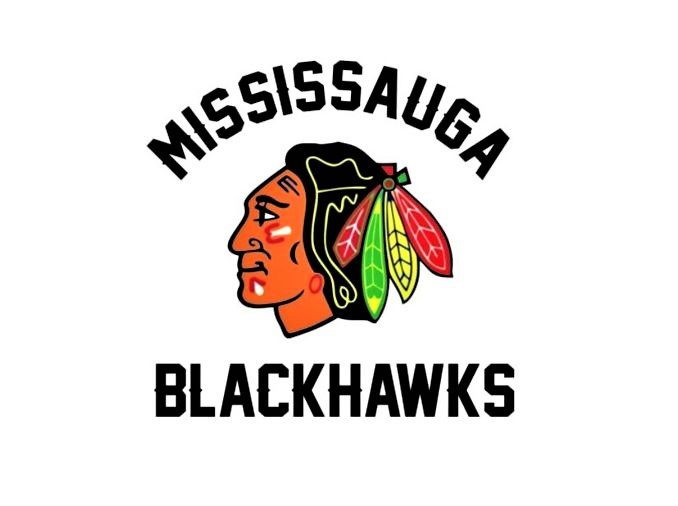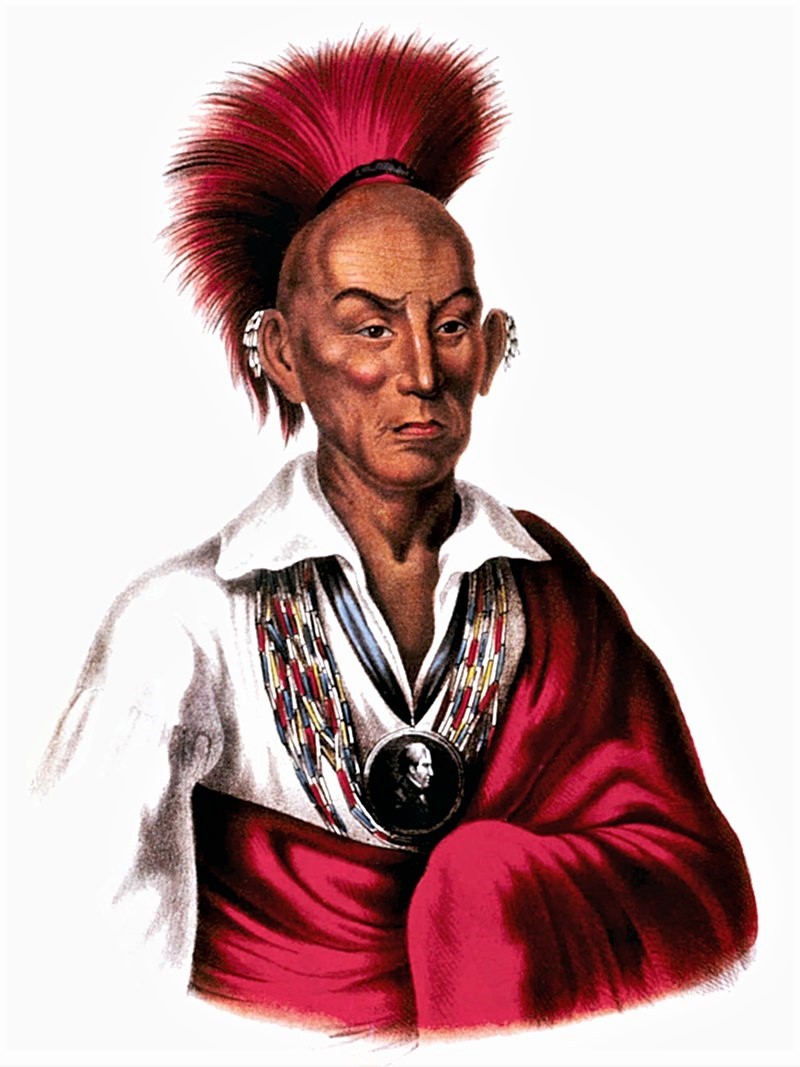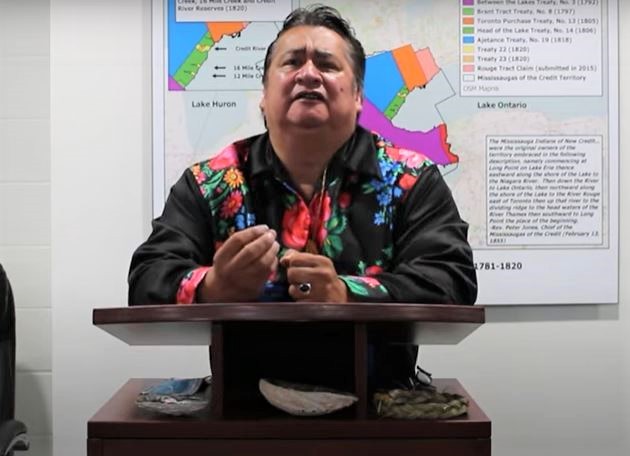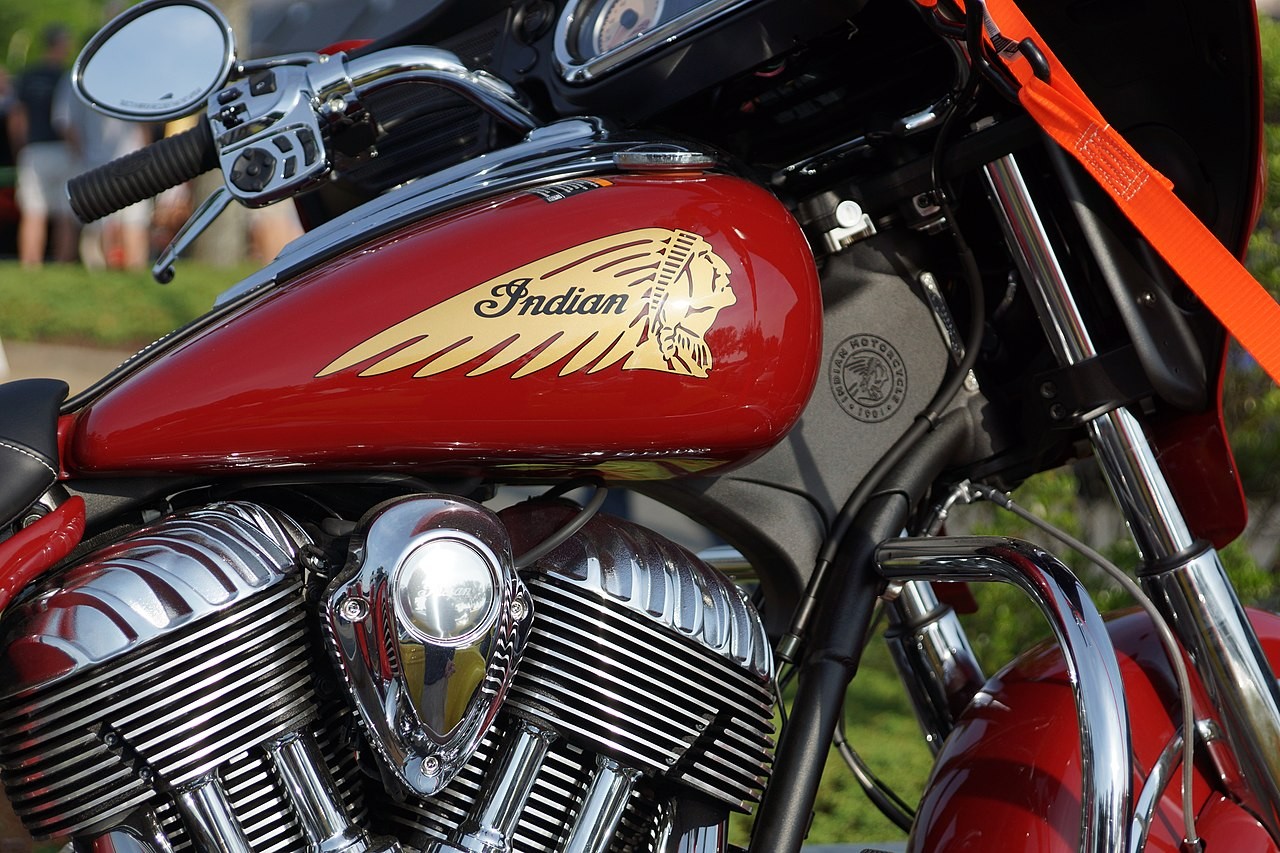
Who was Black Hawk and why is a Mississauga hockey team still using his name?
Ma-ka-tai-me-she-kia-kiak—known as Black Hawk—was a fearless hero who fought for the rights of Indigenous people, including those of other nations.
In 1804, then Chief Quashquame of the Sauk people ceded most of the land of the Mesquakie and Sauk territory to Governor William Henry Harrison, called the Treaty of St. Louis. Black Hawk and the other leaders did not approve of the decision, arguing not all the nations had been consulted and Chief Quashquame had no authority to give up the land.
With the outpour of disapproval, Black Hawk led a resistance against America to settle the land at Fort Madison in July 1809. Years later during the outbreak of the War of 1812, he fought alongside the British, and gained recognition for his bravery and leadership.
Black Hawk actively resisted American expansion after the Treaty of Ghent was signed by the Americans and British to end the War of 1812. He led a group of Sauk and Mesquakie people to defeat American forces and was given a settlement to reaffirm the Treaty of St. Louis (the very one he opposed).
Knowing in his heart who the land’s rightful owners were, the warrior-leader pushed the limits of the Americans, but was ultimately defeated after leading an attack during the short-lived “Black Hawk War”.
The Sauk and Mesquakie people were brutally ripped from their territory, present day Illinois, and relocated to the Kansas Territory, where Black Hawk lived with the remaining Sauk until he died in 1838.

Black Hawk in a painting by Charles Bird King in 1837, a year before his death.
(Wiki Commons)
Nearly a century later, the Second World War was about to erupt. Frederick McLaughlin joined the 333rd Machine Gun Battalion of the 86th Infantry Division and trained in Rockford, Illinois, which is when the division was given the nickname “Black Hawk.” The area the soldiers trained on was the very land the revered Indigenous warrior fought so hard to protect from the Americans who began to appropriate his name and image.
After the war McLaughlin bought a Chicago hockey team in the newly formed National Hockey League (1926), and named the team the Black Hawks, which later changed to a single word.
While Europeans in North America adorned their famous leaders' names on hospitals, universities and schools, legacies to be elevated and celebrated (including many such as Egerton Ryerson's that did great harm to the original peoples of this land), Indigenous history was used to sell products, often playing on bigoted stereotypes and ugly caricatures.
There was no consultation or permission given from Indigenous people, the name Black Hawk was taken without consent and used by the NHL club for a franchise that made millions of dollars. To this day, the team claims the name honours Black Hawk, yet American history tells us the colonizers murdered Sauk women and children and captured Black Hawk as a trophy until he surrendered.
Indigenous groups across North America have asked sports teams, schools and any other institutions to change names or logos if no consultation with First Nations or other leaders was done.
Taking the name without permission and emblazoning it on beer mugs, jerseys and banners is the worst form of appropriation.
The image and namesake of Black Hawk have been reduced to paraphernalia, miscellaneous articles associated with sports teams that have no connection to the legacy of one of the greatest Indigenous leaders.
Mississauga is mixed up in all of this because a minor hockey association club, the Mississauga Blackhawks, in the Greater Toronto Hockey League (GTHL), has not changed its name—despite having no connection to Black Hawk’s story.

Chief Stacey Laforme of the Mississaugas of the Credit First Nation says use of Indigenous imagery and culture should only be done with the consent of First Nations and other Indigenous communities.
(Screen grab City of Mississauga-YouTube)
The Pointer reached out to the club’s president Steve Small but he declined to comment.
In 2015, Brad Gallant, an Indigenous father from Mississauga raised the issue with the City about its use of Indigenous logos and team names in its recreational sports arenas. He said the logos, such as the Mississauga Chiefs or Lorne Park Objibwa perpetrated offensive stereotypes of First Nations.
By 2018, the Ontario Human Rights Commission was involved and the City committed to removing all Indigenous-themed mascots, symbols, names and images from facilities, along with the creation of a policy for the use of Indigenous images and themes at its facilities. Mississauga also committed to supplementing its diversity and inclusion training with material relating to the truth and reconciliation process.
A year and a half later, The Pointer reported Mississauga had not fulfilled one of it’s key requirements; an Indigenous element to its diversity and inclusion training was postponed. At the time Lori Kelly, director of human resources, said the City had been unsuccessful because the available options were “one-size-fits-all.”
“This is a very unique, specific approach with the goal of strengthening our understanding of the history of the Indigenous people in Mississauga and building on the relationships we currently have,” Kelly told The Pointer last year.
Mississauga has yet to fulfill this requirement of including mandatory training given to staff.
A spokesperson told The Pointer in an email, “The City will supplement its current Indigenous Peoples learning opportunities by including mandatory learning for all employees on the history of Indigenous Peoples in 2022.”
The collaboration between Indigenous organizations will provide staff with a 5-module online course on history and contemporary realities of all Indigenous communities in Canada. The cost of the training is yet to be determined.
The other two commitments have been fulfilled by the City, creating a policy around the use of Indigenous logos and names, and the removal of the theme from its facilities.
But The Mississauga Blackhawks, like the NHL franchise, continues to use the name.
“Non-Indigenous teams and members of the general public who display Indigenous images on their designated team uniforms and personal belongings, including the Mississauga Blackhawks, are outside of the City’s jurisdiction,” a City spokesperson told The Pointer in an email.
In 2016, a number of GTHL teams changed their names when the organization brought in a policy in consultation with multiple Indigenous leaders, including Chief Stacey Laforme of the Mississaugas of the Credit First Nation.
“There was not a clear consensus from the [league] leadership about completely eliminating all names and logos,” Scott Oakman, executive director of GTHL told The Pointer in an email. “This review resulted in a GTHL policy being developed.”
The Mississauga club, he said, knows it has to comply with this policy, and has entered into further discussions about changing its name and logo.
“It is something they are considering at this time and we expect that they will be changing the name and logo in the very near future,” Oakman said.
It’s unclear why the process has taken so long. Oakman said in a follow-up email he couldn’t speak on behalf of the Blackhawks as to why the name has not been prioritized, considering the growing concerns of community members.
“I do know the other organizations that changed did so in a planned, structured and expedited manner which allowed them to make the changes in a timely way while limiting the expense to families in their organization,” he said.
Oakman reaffirmed the possibility of a new name for the club in the near future.
The long awaited name change has been bothersome for Chief Laforme and other Indigenous activists. He told CBC the long process doesn’t make sense.
"If you have an image associated with Indigenous people, you should be talking to those Indigenous people and finding out about the culture, heritage, respecting it, honouring it and actually getting permission," Laforme said.
Any usage of Indigenous names, logos, clothing, art, without permission is cultural appropriation. Lee Maracle, instructor at University of Toronto’s centre of Indigenous studies, says using the name without permission is seen as an insult.
“They took something that wasn't theirs and used it,” Maracle told The Pointer. “If you go to your neighbour's house and take his fork from his kitchen and use it, it's called stealing or appropriation. The point is, that you took something that wasn't yours, and you used it without permission.”

American manufacturer Polaris, which owns Indian Motorcycle, the country's oldest maker of motorbikes, has come under fire for the continued use of the name and specific bike models such as the "Indian Chief".
(Wiki Commons)
The idea of cultural appropriation in the past has been seen in direct correlation with Halloween costumes, where people would often “pretend” to be Indigenous or wear stereotypical garments made by whitewashed companies.
The City has said its own staff can get voluntary training to avoid appropriation and familiarize themselves with Indigenous and First Nations history, until the mandatory education is implemented next year.
It’s unclear how much of the history of The Mississauga will be included when the formal material is introduced.
If you prefer to accept the European version of Mississauga’s history, especially in the area now called Port Credit, founded at the meeting place of the Rivière du Crédit and Lake Ontario, civilization began long after the First Nations that formed a crescent moon along the shoreline where The Mississauga had first settled around 1700.
The Anishinaabe word for “River with a wide mouth” is Misi-zaagi and those who lived near such a place were known as Misi-zaaging, from which The Mississauga took their name, after first settling around the mouth of what is now called the Mississagi River, at Lake Huron, west of Sudbury and south of the provincial park named after the river.
They are close relatives of the Ojibwe, and those members who formed the First Nations around the Credit had just driven the Iroquois south of Lake Ontario at the end of the 17th century, settling near the western end of the lake, where The Mississaugas of the Credit established the first ports.
They would eventually control and exercise stewardship over some 3.9 million acres of ecologically sensitive lands including the great lake’s major waterways throughout its basin, extending from the Rouge River Valley westward to the headwaters of the Thames River.
In 1796, John Graves Simcoe was in a canoe on his way back east to his digs in Muddy York (Toronto) when his party was swept ashore by a wicked storm. They headed to the port where The Mississaugas of the Credit lived. It was one of the finest on the lake and Simcoe was taken with it.
According to legend, while resting at the port, Simcoe made a subtle remark that might be construed today as “build it and they will come”. He thought this would be a perfect spot to construct a waystation for rain-soaked travelers. After Simcoe returned to England, his successors picked up on his idea and built the Government Inn (1798) to serve travelers passing through the Mississauga Tract.
A new commercial business sector arose. But there was one nagging problem: the First Nations who had lived off of and protected the land, were in the way.
In 1805, officials from York “purchased” 84,000 acres from The Mississauga that is now the present-day city. Two land treaties were signed and their settlement was eventually shifted north. Later still, they were exiled outright to a First Nations community near Brantford.
In 1834, the first Port Credit marina was constructed. Twenty years later, the port was booming with about 400 people running stores, inns, a blacksmith shop, a school, and a post office. It became one of the busiest ports for shipping, shipbuilding and stops by lake steamers.
The rest is history.
But not one that has included much recognition of those who had protected the land for more than a century while European encroachment first threatened one of North America’s most ecologically significant areas.
Any memory of The Mississauga quickly faded away.
The City currently offers non-mandatory learning for its staff to take, if they choose. Many deal with Mississauga’s diverse community members on a daily basis.
“Human Resources, in cooperation with Indigenous Relations and Strategic Communications and Initiatives, have provided multiple opportunities for staff to further their knowledge and learning through Indigenous speakers and online learning sources over the past year,” the City spokesperson told The Pointer.
Providing opportunities for staff to engage with Indigenous resources does not mandate staff to confront any possible biases or blindspots around Indigenous history in the area, and across the country. It merely provides the option to engage in training.
The Pointer asked Mayor Bonnie Crombie—who almost on a daily basis interacts with community members and oversees various initiatives around equity—about her own diversity and inclusion training.
“I have been in diversity inclusion training a couple of times, but not within the past 18 months,” she said. “I think it was previous to this and we do DNI [diversity and inclusion] training. We also do governance training regularly. So it always includes issues pertaining to all marginalized racialized individuals and of course, Indigenous issues as well.”
For Indigenous people, appropriation of their land, culture, language, and history, including the use of names and imagery with no association to what they represent to the people who have lived this history, has been occurring for decades. It is still very common, as evidenced by sports teams across North America and the branding often used to sell a range of consumer products. Even fashion has routinely and grotesquely reduced Indigenous culture to a cool, quaint accessory.
The use of these culturally appropriated names, images and symbols is ubiquitous.
The Jeep Cherokee is marketed by Fiat Chrysler as “Canada’s best selling 4x4 SUV brand”, reducing an entire First Nation to four wheels with a steel box on top. Children grow up thinking Cherokee is a rugged vehicle, a thing to be bought, and nothing more.
“It's kind of like someone's standing on our necks. And everybody's saying ‘sorry,’ but they're not getting off our neck. They keep doing the same old,” Maracle said.
Now cities and the general public are more aware of the harmful messages all of this sends to Indigenous people, and anyone who cares about the original history of all Canadians. But using land acknowledgements and nookwez (or smudging as Europeans deemed it) as a way to check the box has its own ties to behaviour that amounts to appropriation, especially when such practices are not accompanied by any meaningful action toward reconciliation.
Nookwez (the Ojibwe term—other First Nations have their own words for the spiritual practice) kits made by large companies can be readily bought on Amazon or almost anywhere else where such “soul cleansing smudging products” are sold.
The City of Mississauga, meanwhile, continues to use land acknowledgements in many of its formal gatherings, as it drags its heels on actual policies that show Indigenous communities they are truly being respected.
Maracle says to be a real ally to the communities, residents and local leaders should pick up the 94 Truth and Reconciliation calls to action and complete them.
“Not one of them says take an Indian name and use it anyway you want.”
Email: [email protected]
Twitter: @taasha__15
COVID-19 is impacting all Canadians. At a time when vital public information is needed by everyone, The Pointer has taken down our paywall on all stories relating to the pandemic and those of public interest to ensure every resident of Brampton and Mississauga has access to the facts. For those who are able, we encourage you to consider a subscription. This will help us report on important public interest issues the community needs to know about now more than ever. You can register for a 30-day free trial HERE. Thereafter, The Pointer will charge $10 a month and you can cancel any time right on the website. Thank you
Submit a correction about this story


